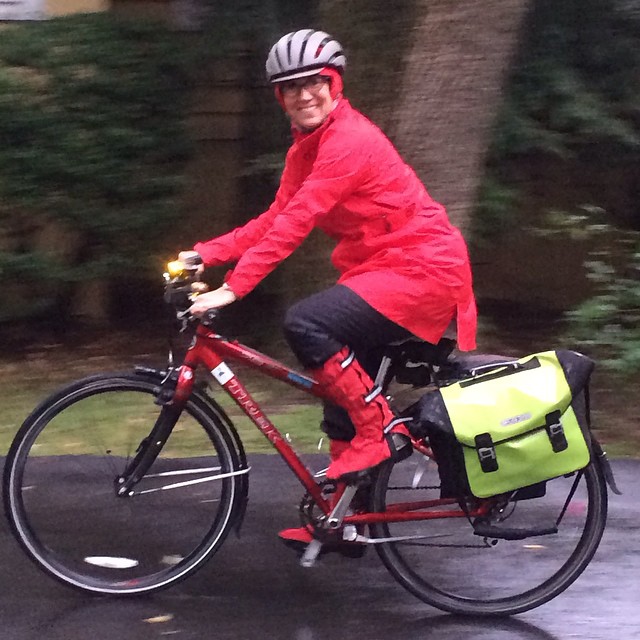 So, how much money do you save by bike commuting? Probably a lot, but let’s run the numbers.
So, how much money do you save by bike commuting? Probably a lot, but let’s run the numbers.
First, the car expense – according to the AAA’s Your Driving Costs 2014 report, operating a small sedan costs $7930/year, while a SUV runs $12,446/year, including gas, maintenance, depreciation, insurance, loan interest, etc.
What about biking expenses? Elly Blue, author of Bikenomics, refers us in her blog post on the subject to transportation economist Todd Littman’s 2011 research, which gives a range of $100-$300 per year for operating costs, which is comparable to AAA’s $7930 for a small sedan, since it includes depreciated cost of the bike, etc.
Like the variation between the cost for a small sedan and a SUV, bike costs can vary a lot, too. Here’s hypothetical cases for a high quality and an economical setup, based on online prices from the same national outdoor recreation equipment company:
High Quality – $2153
- New commuter bike, including fenders, rack, front/rear lights – $1400
- Commuter Helmet, including attachment for front/rear lights – $65
- Front/rear helmet lights – $100
- U-lock plus cable – $100
- Multitool ($50), spare tube ($10) , flat repair kit ($3), frame pump ($45), lube ($10) – $118
- Rainwear – jacket ($100), pants ($75), gloves ($45), helmet cover ($30) – $250
- Pannier, handlebar bag or backpack – $120
Economical – $543
- New hybrid bike – $400
- Rack ($25), front/rear lights (to be seen, not to light the road, $20) – $45
- Helmet – $25
- U-lock – $20
- Multitool ($10), flat repair kit ($3), frame pump ($10), lube ($5) – $28
- Rain poncho w hood – $5
- Backpack – $20
Typical bike maintenance is easy enough to learn that many people do it themselves – fixing a flat tire, lubing a chain, adjusting brakes – a web search shows numerous how-to videos that are very instructive. Blogger James Schwartz assumed $50 per year for maintaining a $1500 commuter bike.
Clearly, bike commuting saves a lot of money if you can actually reduce the number of cars you own, since you can buy multiple high quality new bikes and gear every year for much less than the operating costs of even a small sedan. But it is very difficult in the suburbs to go car free, so what if you only have one car? Then the savings will only be based on reduced miles driven, which saves on gas, maintenance, tires and depreciation.
According to the AAA report, the operating costs (gas, maintenance, tires) for a small sedan is 16.3 cents/mile, and 23.8 cents/mile for a SUV. If your commute is 2 miles each way, like mine, then 4 miles roundtrip x 240 working days/year equals 960 miles biked each year.
The 960 mile reduction in driving would save $156.48 (operating costs) plus $33.60 (reduced depreciation), totaling $190.08 for a small sedan, and $228.48 (operating costs) plus $48.96 for (reduced depreciation), totaling $277.44 for an SUV. This is in the range for paying for the annual bike costs, but hardly a killer incentive by itself. It will help if your employer offers you the IRS Bicycle Commuter Tax Benefit – you can be reimbursed up to $240 each year for bike commuting expenses.
Of course you might choose to use the commuter bike for other errands, such as small grocery runs, to the bank, post office, etc. Since only 15% of our trips are for commuting, that leaves a lot of other trips that could be done by bike – e.g. 40% of all trips are 2 miles or less, and if you take the bike/walk trips out of the denominator, 69% of car trips are 2 miles or less.
Of course, you’ll save more in indirect costs, for example if you substitute biking for a gym membership, that could save about $1000/year. And the potential for saving money on health care is huge, since you may be much healthier with regular activity.
Last but perhaps most important, you’ll be saving the world by reducing greenhouse gas emissions, since car exhaust is the single largest contributor in our area to CO2 emissions.
